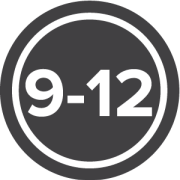
Pushing Towards Civil Rights
The push towards civil rights in the United States has been longstanding and is ever-evolving. While not encompassing, our civil rights unit covers the expansion and abolition of slavery, women’s suffrage, the Civil Rights Movement of the 1950s and 60s, and the expansion of rights through court cases and laws. For more coverage, check out additional cases in our Landmark Library.
Topic at a Glance: Civil Rights Movement | Nashville Sit-Ins | Montgomery Bus Boycott | Martin Luther King, Jr. | Rosa Parks | Barbara Johns | NAACP | Legal Defense Fund | Constance Baker Motley | Autherine Lucy | Pollie Ann Myers | Little Rock | Executive Order 10730 | voting rights | voting rights history | slavery | Missouri Compromise | Civil War and Reconstruction | Jim Crow | Jim Crow laws | segregation | separate but equal | right to fair housing | Shelley v. Kraemer | integration | desegregation | women’s suffrage | women’s rights | civic engagement | civic action | changemakers
Choose Grade Level:
-
Lesson Plan
Slavery: No Freedom, No Rights
-
Lesson Plan
Slave States, Free States
-
DBQuest
Resisting Slavery
-
Lesson Plan
Civil War & Reconstruction
-
Lesson Plan
Jim Crow
-
DBQuest
Woman Suffrage and World War I
-
Lesson Plan
A Movement in the Right Direction (Infographic)
-
Lesson Plan
The Road to Civil Rights
-
DBQuest
Little Rock: Executive Order 10730
-
Video
The NAACP Legal Defense Fund












